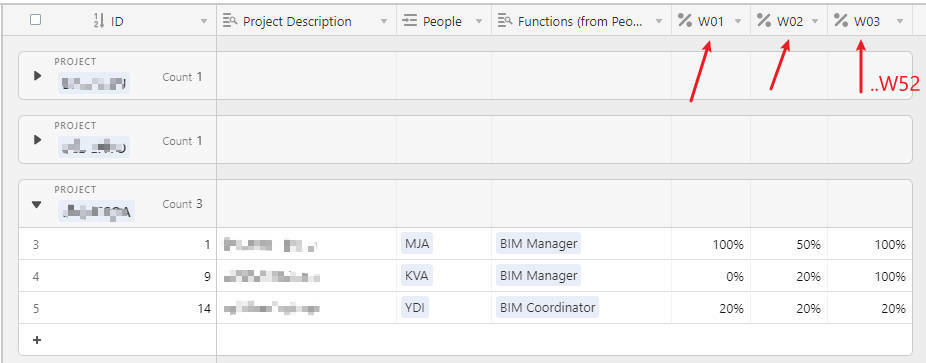
We need to plan and follow up our teams on a weekly basis.
Or we do it with start-end dates (but then we need multiple lines for the same person) Or we create a column for every week (see screenshot). Not the best database-design, but it works for now.
also for creating totals… it’s quite challenging (W01+W02+…W52)
Are there better solutions to tackle this ?

